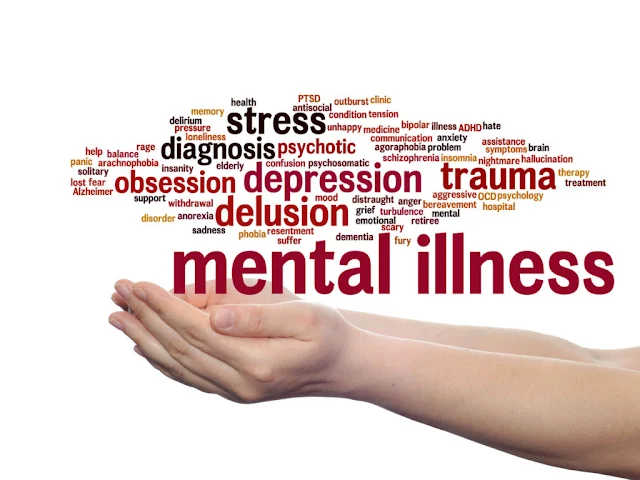Mental health disorders, also known as mental illnesses, are conditions that affect an individual's thoughts, emotions, behavior, and overall well-being. These disorders can range from mild to severe, and they have a significant impact on an individual's daily life, relationships, and overall functioning. In this article, we will explore the different types of mental health disorders, their prevalence (epidemiology), available treatments, common symptoms, underlying causes, and potential prevention strategies.
Types of Mental Health Disorders
There are numerous mental health disorders that individuals can experience. Some common types include:
1. Anxiety Disorders: These disorders involve excessive and persistent worry, fear, or anxiety, often leading to physical symptoms like rapid heartbeat, shortness of breath, and restlessness. Examples include generalized anxiety disorder, panic disorder, social anxiety disorder, and phobias.
2. Mood Disorders: Mood disorders are characterized by significant disturbances in an individual's emotional state. Conditions such as major depressive disorder, bipolar disorder, and seasonal affective disorder fall into this category. They can involve significant periods of sadness, hopelessness, or alternating episodes of depression and mania.
3. Psychotic Disorders: These disorders involve distorted thinking, perception, and a loss of touch with reality. Schizophrenia is one of the most well-known psychotic disorders, which often causes hallucinations, delusions, and disorganized thinking.
4. Eating Disorders: Eating disorders are characterized by an unhealthy relationship with food and body image. Examples include anorexia nervosa, bulimia nervosa, and binge-eating disorder. These disorders can have severe physical and psychological consequences.
5. Personality Disorders: Personality disorders are characterized by rigid patterns of thinking, behavior, and emotions that can cause significant distress and impair functioning. Examples include borderline personality disorder, narcissistic personality disorder, and obsessive-compulsive personality disorder.
Epidemiology
Mental health disorders are highly prevalent worldwide, affecting individuals of all ages, genders, and backgrounds. According to the World Health Organization (WHO), approximately 1 in 4 people globally experience mental health issues at some point in their lives. Depression and anxiety disorders are among the most common.
Symptoms
The symptoms of mental health disorders can vary depending on the specific condition. However, there are some common signs to look out for, including:
- Persistent sadness or irritability
- Feelings of anxiety or panic attacks
- Social withdrawal or isolation
- Changes in appetite or weight
- Sleep disturbances or changes in sleep patterns
- Difficulty concentrating or remembering
- Loss of interest or pleasure in previously enjoyed activities
- Mood swings or extreme changes in behavior
- Suicidal thoughts or self-harming behaviors
Causes and Prevention
The causes of mental health disorders are multifaceted and can vary from individual to individual. Some contributing factors include genetic predisposition, brain chemistry, traumatic experiences, chronic illness, substance abuse, and environmental stressors. Prevention strategies for mental health disorders involve:
1. Early Intervention: Recognizing and addressing symptoms early can significantly impact the course of mental health disorders. Seeking help from healthcare professionals or mental health providers at the first signs of distress can lead to timely intervention.
2. Developing Coping Skills: Building resilience, healthy coping mechanisms, stress-management techniques, and social support systems can act as protective factors against mental health disorders.
3. Creating Supportive Environments: Promoting mental health awareness, reducing stigma, improving access to mental health services, and fostering supportive communities can help prevent and manage mental health disorders.
Treatments
Effective treatments for mental health disorders are available, and recovery is often possible. Treatment plans are often individualized and may include a combination of the following:
1. Psychotherapy: Also known as talk therapy, psychotherapy involves working with a trained therapist to explore and address underlying emotions, thoughts, and behaviors.
2. Medication: In some cases, medication may be prescribed to alleviate symptoms of mental health disorders. Antidepressants, antipsychotics, mood stabilizers, and anti-anxiety medications are among the commonly used drugs.
3. Supportive Interventions: Supportive interventions like support groups, self-help resources, and lifestyle changes (maintaining a balanced diet, regular exercise, and adequate sleep) can also be beneficial in managing mental health disorders.
In conclusion, mental health disorders are prevalent and can significantly impact individuals' lives. Understanding the different types, recognizing symptoms, accessing appropriate treatments, and promoting prevention strategies are essential for addressing mental health concerns. By fostering an environment that prioritizes mental well-being, individuals can aspire to achieve optimal mental health and overall quality of life. Seek professional help if you or someone you know is experiencing mental health difficulties; help is available, and recovery is possible.


Post a Comment
Full Name :
Adress:
Contact :
Comment: